The 10 Best Places In Colombia For Mindful Birdwatching
Colombia is the best country in the world for birdwatching with more bird species than any other country on Earth, with over 1,900 recorded. In some of the best birdwatching areas of Colombia, you can see 100s of different kinds of birds in a single day.
From the snowcapped peaks of the Andes to the dense Amazon jungle, this tropical ecotourism giant offers a wildly diverse range of ecosystems you can visit in a single trip. This unique rugged mountain geography creates countless microhabitats, making Colombia a top destination for birdwatchers and wildlife lovers.
The country has more than 80 endemic species, meaning these birds are found nowhere else in the world. And thanks to Colombia’s growing ecotourism infrastructure, many of the best birding spots now have ecolodges, protected birding reserves, and local birdwatching guides.
Whether you are interested in photographing hummingbirds, toucans, parrots or tracking rare antpittas, Colombia offers the thrill of discovery at every turn for avid birdwatchers and nature photographers.
Mindful birdwatching here is more than just a hobby. It’s a way to explore the country’s incredible biodiversity, support conservation efforts, and connect with Indigenous and rural communities. Many of these reserves I will cover in this guide are community-led or operated by foundations that reinvest directly into protecting native forests and ecosystems.
Seasonality plays a role, but Colombia is truly a year-round birding destination. The dry seasons, typically from December to March and July to August, are the most popular times to visit. However, many regions are accessible year-round depending on weather and elevation.
This Colombia birdwatching guide will take you through 10 of Colombia’s most iconic birdwatching destinations. For each, you’ll find a short overview, what to expect on the trails, and a list of endemic and other key species to watch for.
Bring your binoculars, a sense of curiosity, and maybe a rain jacket because you’re always in for a wild ride in Colombia.
1. Sierra Nevada de Santa Marta

“The Sierra Nevada is often called the most important site for endemic birds in the Americas. This isolated coastal mountain range rises from sea level to over 5,700 meters in just 42 kilometers. Its steep gradients create a high level of endemism and diverse bird habitats.”
The Sierra Nevada is one of the most important birding regions in the world. Its steep elevation rise from sea level to glacier-capped peaks creates unique conditions for endemism. Over 20 endemic bird species live exclusively in this range.
El Dorado Reserve is the most accessible and well-developed base for birdwatching in the area. The trails around the lodge are excellent for spotting hummingbirds, flycatchers, and tanagers. San Lorenzo Ridge, at higher elevation, is where you’ll find many of the rarest species.
You’ll need a 4×4 to reach the higher elevations, and mornings are your best bet for sightings. The mix of Caribbean humidity and mountain mist creates some truly ethereal birdwatching moments, especially around sunrise.
Endemic Species:
Santa Marta Parakeet, Santa Marta Brushfinch, Santa Marta Antpitta, Santa Marta Screech Owl, Santa Marta Mountain-Tanager
Other Species Highlights:
Black-fronted Wood-Quail, White-tipped Quetzal, Band-tailed Guan, Golden-breasted Fruiteater
Best Season: November to April
Travel Notes:
- Stay at the El Dorado Birding Reserve near Minca
- Bring layers and rain gear for the chilly, damp mornings
- Trails are well-marked but elevation can be intense’
2. La Guajira Peninsula & Los Flamencos Sanctuary
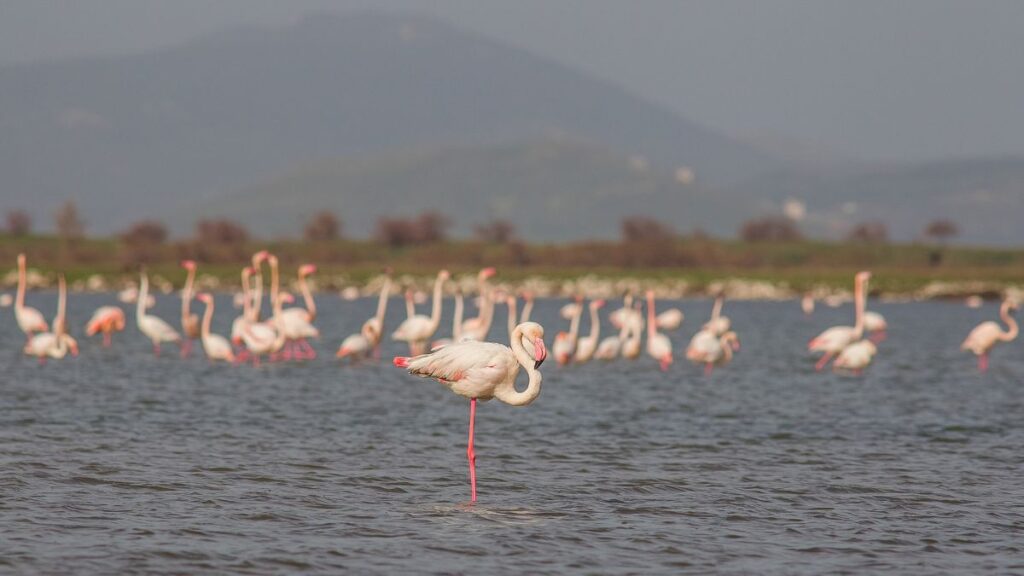
Switching to desert-meets-sea, La Guajira offers entirely different birdlife. Its coastal lagoons host thousands of shorebirds and flamingos. Inland dry forest supports warblers and cardinal-like species.
Los Flamencos Sanctuary is the hotspot for American Flamingos and diverse shorebirds. Hiking trails cross scrub habitat where Vermilion Cardinal and Pyrrhuloxia may appear. Sunrise and late afternoon light make flamingo watching extra magical.
The region is hot and arid. Bring sun protection, plenty of water, and sturdy shoes. A 4×4 may be needed to reach remote lagoons.
Endemic Species:
Vermilion Cardinal, Neotropic Cormorant (regional specialty), Rufous-tailed Hummingbird
Other Species Highlights:
American Flamingo, Tropical Parula, Yellow-Oriole, Common Pauraque
Best Season: September to March
Travel Notes:
- Plan visits in early morning or late afternoon for flamingos
- Bring shade gear and refillable water bottle
- Combine with visits to Wayuu villages for culture
3. Cerro Montezuma, Tatamá National Park

Cerro Montezuma is a dream spot for hardcore birders. It’s part of the Chocó bioregion, known for heavy rainfall and exceptional biodiversity. The elevation here ranges from 1,200 to 2,600 meters, making for a wide variety of species.
The Montezuma Rainforest Lodge is your entry point and one of the best birding lodges in Colombia. The main trail starts at the top and descends gradually through different forest layers, each full of unique birdlife. You’ll pass flocks of tanagers, hummingbirds, and ground-dwelling antpittas.
This area sees rain almost every day, so come prepared. The reward is high species counts and rare endemics, some of which are hard to find anywhere else in the country.
Endemic Species:
Gold-ringed Tanager, Black-and-gold Tanager, Chestnut-bellied Flowerpiercer, Tatamá Tapaculo
Other Species Highlights:
Bicolored Antpitta, Dusky Chlorospingus, Velvet-purple Coronet, Orange-breasted Fruiteater
Best Season: June to September
Travel Notes:
- Book a 3-day Birdwatching Trek in Tatama National Park
- Road can be rough so 4×4 or arranged shuttle is recommended
- Excellent photography opportunities at feeders and forest edges
4. Amagá and the Cauca Valley
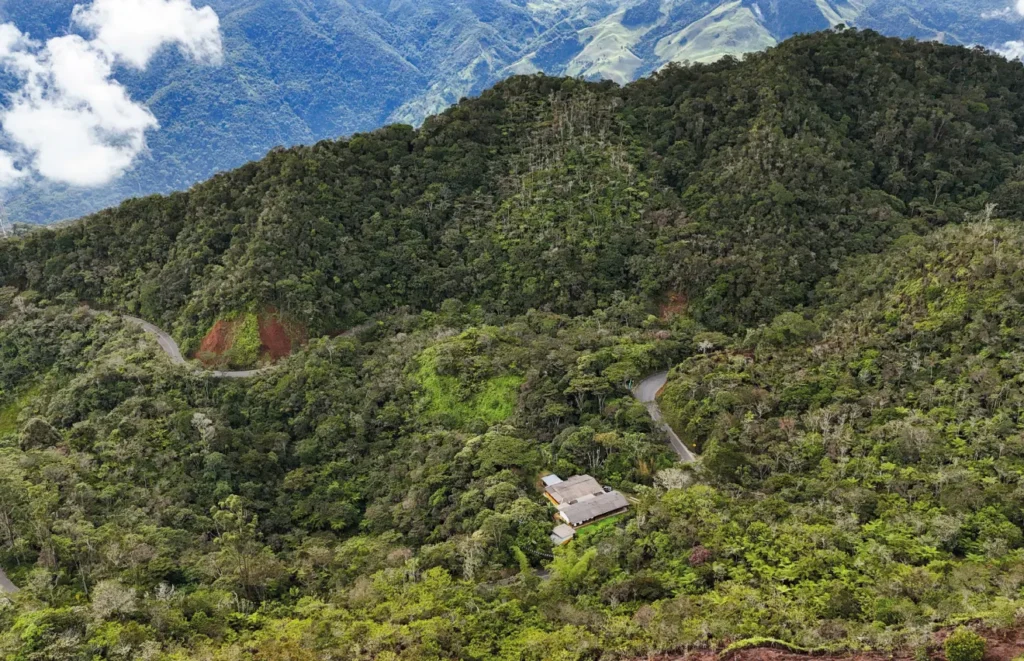
The forests near Amagá, southwest of Medellín, are part of one of Colombia’s most threatened ecosystems. These humid mid-elevation forests are home to birds with tiny ranges and very specific habitat needs.
ProAves’ Arrierito Antioqueño Reserve protects key territory for several endangered species. The Chestnut-capped Piha, for example, was only rediscovered in the late 1990s and remains one of Colombia’s rarest birds. The reserve offers rustic but comfortable lodging and guiding.
The birding here is dense and sometimes tricky, but worth the effort. It’s also a great place to reflect on the role conservation plays in protecting fragile ecosystems.
Endemic Species:
Chestnut-capped Piha, Antioquia Bristle-Tyrant, Multicolored Tanager
Other Species Highlights:
Red-bellied Grackle, White-mantled Barbet, Sooty-headed Tyrannulet, Andean Cock-of-the-rock
Best Season: December to March
Travel Notes:
- Guided birding highly recommended due to dense forest
- Trails can be steep and muddy so hiking boots are a must
- Reserve helps fund habitat protection and local education
5. Jardín and Yellow-Eared Parrot Reserve

The small town of Jardín in Antioquia is a favorite among birders and photographers. It sits near large stands of wax palms, the nesting grounds of the endangered Yellow-eared Parrot. The surrounding cloud forests offer excellent trails, Andean endemics, and easy road access to remote habitat.
ProAves’ Yellow-eared Parrot Reserve protects one of the best viewing areas. Mornings are ideal for watching parrot flocks leave their roosts. The road to the reserve also offers roadside birding with tanagers, mountain-toucans, and more.
Jardín is also famous for its Andean Cock-of-the-rock lek, located right on the edge of town. It’s one of the few places in Colombia where you can see both iconic species on the same morning.
Endemic Species:
Yellow-eared Parrot, Red-bellied Grackle, Dusky Starfrontlet
Other Species Highlights:
Andean Cock-of-the-rock, Crimson-mantled Woodpecker, Black-billed Mountain-Toucan, Golden-headed Quetzal
Best Season: June to August
Travel Notes:
- Easy access from Medellín by bus or car
- Yellow-eared Parrots are best seen at sunrise
- Cock-of-the-rock lek is open to the public for a small fee
6. Chingaza National Natural Park
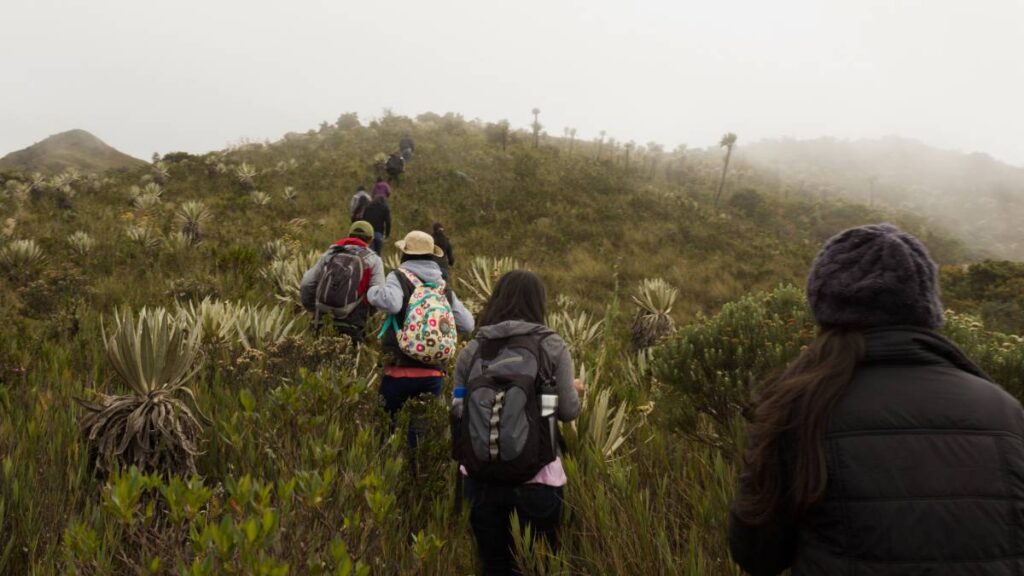
Just a couple hours from Bogotá, Chingaza offers high-altitude birding with a backdrop of paramo, glacial lakes, and misty forests. The park protects critical habitat for species found only in the Eastern Andes and is one of the best places to spot the Andean Condor.
The mix of elfin forest and open páramo is perfect for birding. You may spot hummingbirds with absurdly long bills, skulking wrens, or tanagers flitting through the mist. Pack warm clothes—weather can shift quickly.
You’ll need to register and enter through one of the park’s controlled access points. Lagunas de Siecha and the Monterredondo sector are good choices for both scenery and birds.
Endemic Species:
Rufous-browed Conebill, Brown-breasted Parakeet, Silvery-throated Spinetail
Other Species Highlights:
Andean Condor, Sword-billed Hummingbird, Buffy Helmetcrest, Black-chested Buzzard-Eagle
Best Season: December to March
Travel Notes:
- High elevation and cold temperatures require warm, waterproof clothing
- Entry permits and ID required, book ahead through Colombia’s park service
- Some trails are steep and exposed, take it slow at altitude
7. San Cipriano and Anchicayá Valley
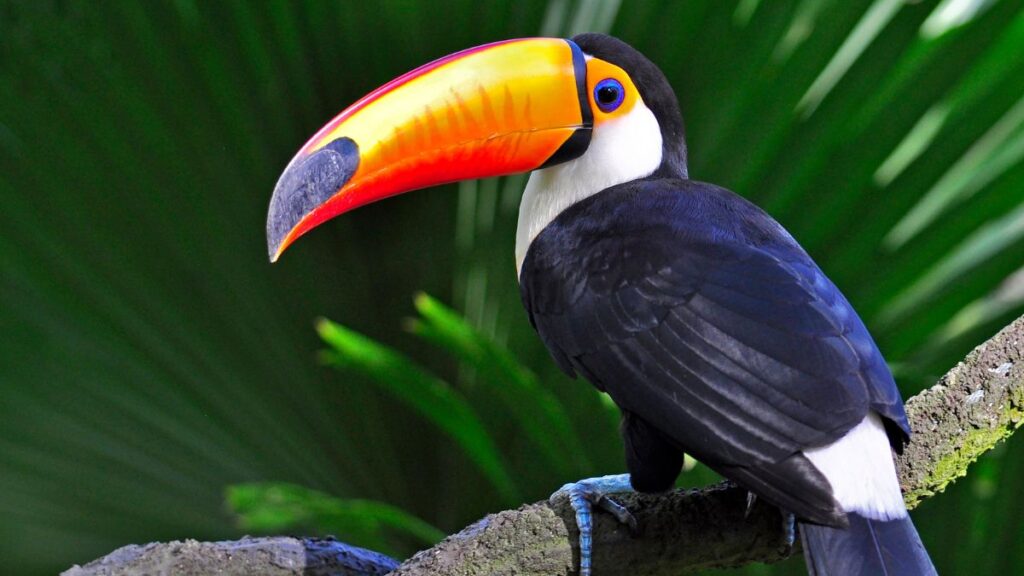
On Colombia’s Pacific slope, San Cipriano and the Anchicayá Valley offer lowland and foothill rainforest birding at its best. This is the Chocó rainforest habitat where you get the highest rainfall in Colombia. It’s lush, wet, and packed with species found nowhere else in Colombia.
San Cipriano is a tiny Afro-Colombian village accessible by a quirky “brujita” rail cart ride. The area offers trails, riverside birding, and a shot at species like the Club-winged Manakin. Anchicayá is famous for roadside birding, ideal for seeing mixed flocks without intense hiking.
This region is best visited with a guide due to its complexity and potential safety concerns. But it’s one of the most rewarding places for species diversity and rare sightings in the country.
Endemic Species:
Baudo Oropendola, Chocó Vireo, Tatamá Tapaculo
Other Species Highlights:
Club-winged Manakin, Rose-faced Parrot, Scarlet-and-white Tanager, Stripe-throated Hermit, Chocó Tucan
Best Season: June to October
Travel Notes:
- San Cipriano requires a rail cart ride through forest
- Anchicayá road is narrow and often wet, ideal for slow vehicle birding
- Local guides from Buenaventura or Cali highly recommended
8. Amazonas Region – Leticia & Amacayacu
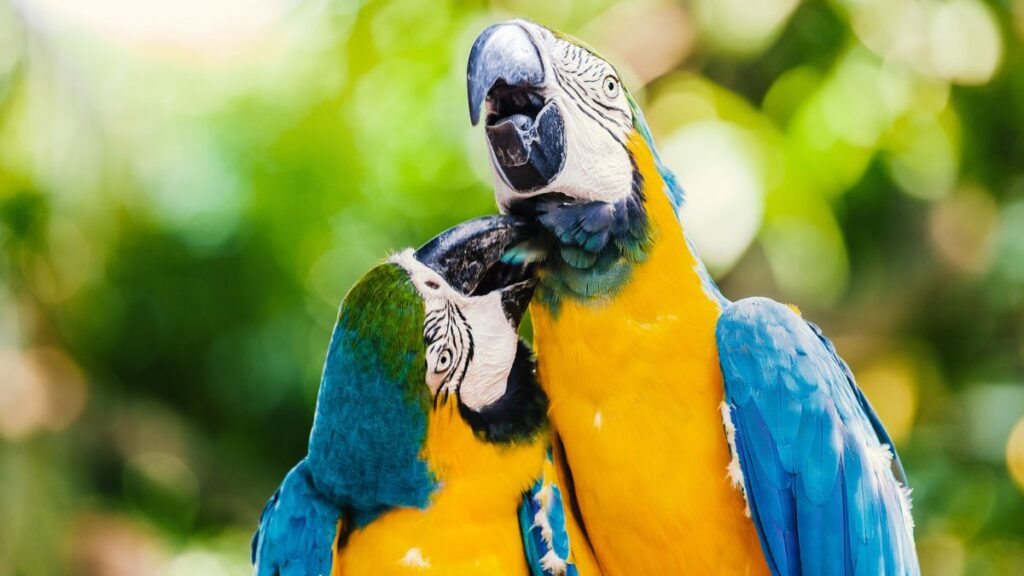
Deep in Colombia’s southern jungle, Leticia is the gateway to Amazonian birding. Filtered sunlight through dense forest reveals tanagers, cotingas, macaws, and river birds. Boat rides offer sightings of parrots perched on flooded branches and shorebirds along sandy riverbanks.
Amacayacu National Park, Reserva Marasha, and Tanimboca Trails are top birding zones. Local birdwatching guides lead dawn hikes into terra firme and varzea habitats. You might spot flocks of parrots overhead or glimpse the elusive Amazonian Umbrellabird in canopy gaps.
Expect high humidity, frequent rain, and warm temperatures. Mosquito repellent and waterproof gear are essential. Variety is the name of the game here and each day birding can bring sightings of 200+ species.
Endemic Species:
Paradise Tanager, Purple-throated Fruitcrow, Black-spotted Bare-eye
Other Species Highlights:
Scarlet Macaw, Ornate Hawk-Eagle, Gray-winged Trumpeter, Rose-throated Becard
Best Season: July to November
Travel Notes:
- Fly into Leticia and organize boat transfers to lodges
- Expect early mornings and long boat days
- Combine birding with wildlife cruises (dolphins, monkeys, caimans)
9. Otún-Quimbaya Flora & Fauna Sanctuary
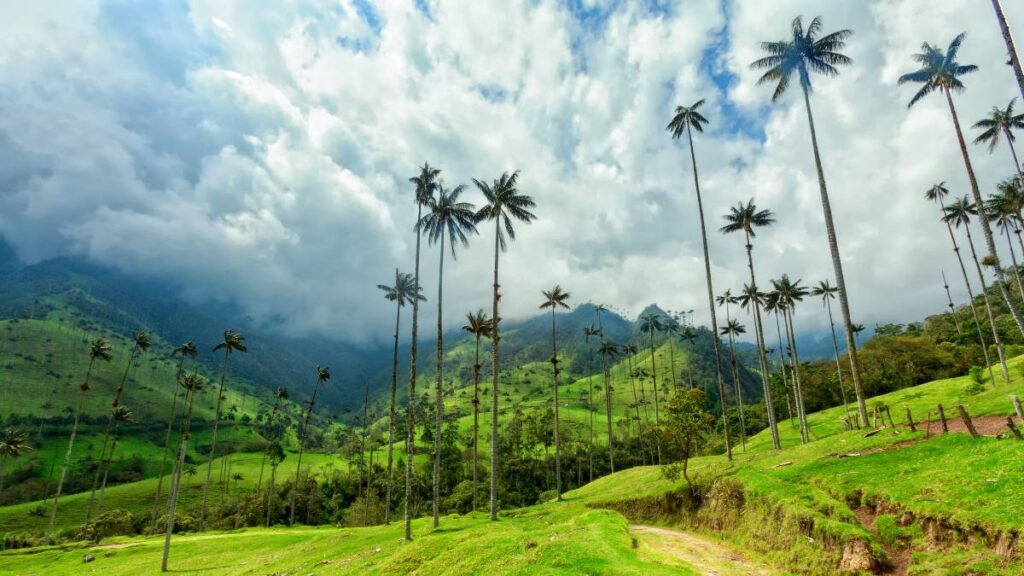
High in the central Andes, near Pereira in the Coffee Axis, Otún-Quimbaya offers lush Andean cloud forest trails. It’s a reliable spot for Cauca Guan, a species once thought extinct but making a comeback thanks to habitat protection.
The reserve’s trails take you past streams, mossy forests, and forest edges with high species diversity. Early morning birding often brings mixed flocks and elegant fruitcrows tossing fruit in the canopy.
Rustic lodging is available on-site. Nights are cool and misty, so bring layers. Trails are easy to moderate, ideal for day hikes with cameras. I’d also recommend visiting the nearby Cocora Valley for mountain trekking.
Endemic Species:
Cauca Guan, Red-ruffed Fruitcrow, Wattled Guan
Other Species Highlights:
Andean Motmot, Golden-plumed Parakeet, Blue-naped Chlorophonia, Masked Trogon
Best Season: June to August
Travel Notes:
- Located about 1 hour from the city of Pereira
- On-site cabins and campground available
- Pay conservation fee for access
10. Huila & Cueva de los Guácharos National Park
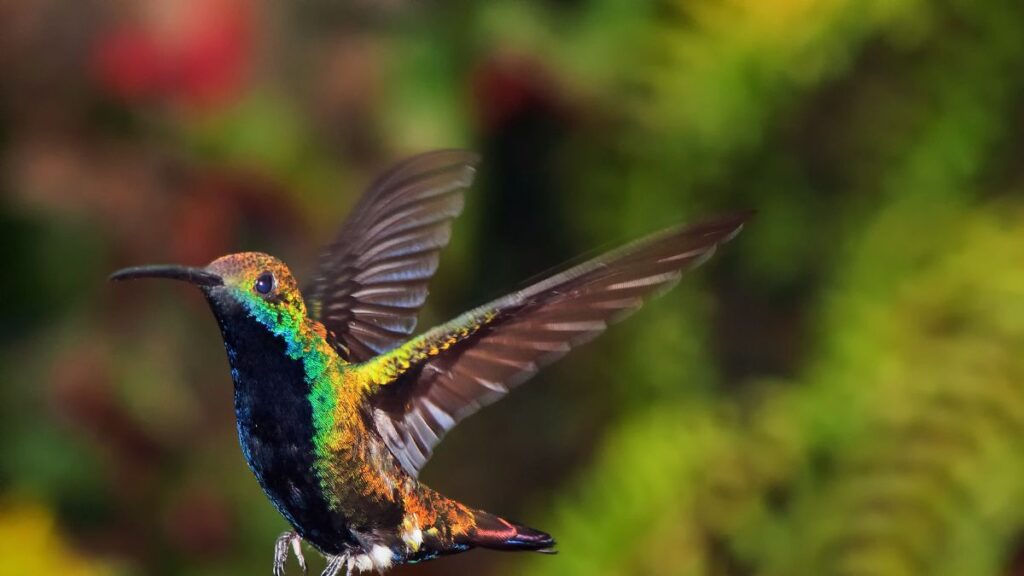
In the southern Andean area of Huila, Cueva de los Guácharos is the world’s only national park named after a bird. It protects the cloud forest and páramo around an enormous cave system inhabited by Oilbirds that navigate by echolocation.
Daylight birding brings tanagers, antpittas, and large hummingbirds. At dusk you can watch Oilbirds flit out of their roost to feed in the forest, a magical experience.
The park is remote, with basic lodging and long travel times. Allow a couple of days for full visits and cave exploration.
Endemic Species:
Oilbird, Chestnut-naped Antpitta, Yellow-headed Manakin
Other Species Highlights:
Andean Solitaire, Plate-billed Mountain-Toucan, Rufous-breasted Antthrush, Bronze-tailed Thornbill
Best Season: June to September
Travel Notes:
- Road is rough; 4×4 recommended
- Tours to caves start at dusk
- Combine with visits to Tatacoa Desert nearby
Listening To The Forest Through Mindful Birdwatching
Mindful birdwatching is a slow, intentional way to connect with nature. Standing quietly in the forest, you begin to notice the small things and the forest comes alive when you stop trying to rush through it.
Colombia’s ecosystems are incredibly diverse and moving through these landscapes with a pair of binoculars and an open mind turns a hike into a meditation. Birding teaches patience and presence in a world that rarely slows down.
Ecotourism gives travellers the chance to experience this without leaving a heavy footprint. By staying in family-run lodges, hiring local birdwatching guides, and supporting conservation areas, you’re helping preserve the very habitats that make Colombia so rich. It’s a win for nature and for the communities that protect it.
Mindful travel is about more than scenery. It’s about how you move through the world. When you birdwatch with curiosity, hike with care, and support local efforts, your trip can become a form of regenerative tourism.
Colombia has the birds, the forests, and the people ready to welcome you. All you need is a little time, a quiet heart, and a willingness to listen. The forest and the birds will take care of the rest.
- The 10 Best Places In Colombia For Mindful Birdwatching - July 31, 2025
- 10 Amazing Facts & Statistics About Ecotourism In Colombia - July 19, 2025
- 10 Best Multi-Day Hikes And Trekking Adventures In Mexico - July 15, 2025



